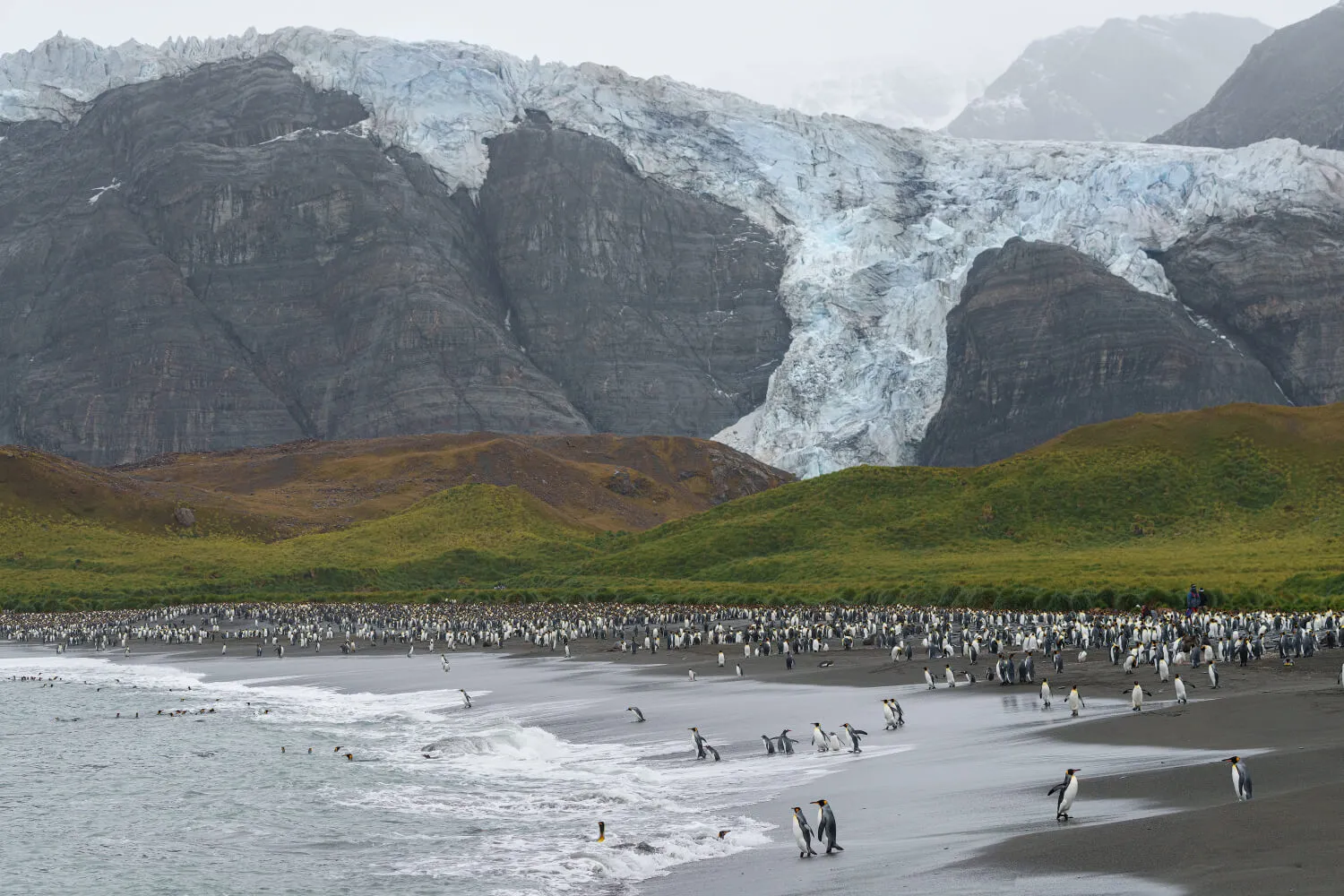

If you’ve ever been on safari in Africa, then you know the thrill of seeing one of the world’s most incredible wildlife species in their natural habitat. Whether a lion romping around in the wetlands or a gazelle charging through a wide and open plain, travelers venture from all over the world to see the spectacles of nature available on the African continent. The same is true for Antarctica, where some of the world’s most interesting species are found in a land where it’s safe and free for them to roam amidst the ice. Be it a waddling penguin making its way to its nest to feed its hatchlings or a pod of orcas dashing through the sea in hopes of catching their next meal, witnessing Antarctica’s wildlife can feel much like a safari.Antarctica21’s International Travel Consultant Rafael Guzmán recently returned from a Classic Antarctica Air-Cruise expedition aboard the nimble Ocean Nova, where he drew parallels from his safari spent at Chobe National Park in Botswana, an area that’s remarkable for having the highest density of African elephants in the world. For Rafael, the experience of traveling on the Ocean Nova with Antarctica21 was similar in many ways.
“The landscape is extremely different, as you can imagine, along with the temperatures, but the density of wildlife and the action and excitement to rush for the perfect photograph of a species felt pretty much the same.”
In Africa, he was excited to see animals he had dreamt of witnessing for so long, but in Antarctica, he was stunned and incredibly surprised: “It's a wildlife lover's dream.” And while Africa involves incredibly long hours of driving down bumpy driving dirt roads, Antarctica21’s ship experience was that of comfort and ease. “The ship was never far off, with a team waiting for us with warm drinks,” says Rafael. “We never had to sacrifice an ounce of comfort.”Though he loved his time in Africa, Rafael’s top travel experience is now Antarctica: “It became my favorite wildlife experience ever!”Keep reading to learn more about Rafael’s experience seeing Antarctica’s ultimate Big 5 species!
Humpback Whale
As the most abundant baleen whale in and around the Antarctic Peninsula, Rafael had this larger-than-life species on his bucket list of hopeful sightings. “After taking our private flight, we landed at King George Island for the start of our trip aboard Ocean Nova,” says Rafael.
“We hadn’t even been on the ship for 10 minutes, and the expedition team announced on the speakers that two humpbacks were breaching near the ship, a mother and calf. They were doing these crazy jumps, going upside down, and waving their fins over the water. This lasted for 20 minutes. It was wild!”

Leopard Seal
Leopard seals get their name for their appearance: their spotted coats resemble a leopard. They are also a lot bigger than expected, about three meters in length. But, most of all, these seals are fierce hunters that use their powerful jaws, and long, sharp teeth to eat their prey: smaller seals, fish, and squid.
“On a Zodiac ride, we got notified that there was a leopard seal nearby. When we arrived to view it, we all sat mesmerized. After about 15 minutes, it suddenly jumped into the water. From the Zodiac, we could see its and showed us its teeth and even saw it blow water out of its nose. Shortly after, we saw it hunting a lone penguin on a small iceberg, I could not believe what I was seeing.”

Adelie Penguin
You know you’ve spotted an Adélie penguin when you see a medium-sized penguin with white rings surrounding its eyes. When Rafael saw Adélies for the first time, he felt like he was in a nature documentary. “There were hundreds of them, all completely undisturbed. They were cuter, sillier, and more animated than I could have imagined,” says Rafael. “We saw them gathering pebbles to build nests, and then stealing pebbles from other penguins and getting into scuffles. There were also skuas present, scavenger birds that were trying to steal their eggs.”

Fin Whale
These large cetaceans are only second in length to the blue whale, growing to nearly 85 feet (26 meters). Rafael was lucky enough to see three of them on his expedition aboard Ocean Nova. “After watching a documentary, I learned how fin whales were completely overhunted in much of the 20th century and that there were only a few hundred breeding pairs left. When they banned whaling, they bounced back. The reason that they were hunted so easily is that they are curious, friendly, and playful. So to see one in person was amazing, especially considering their history.”

Wandering Albatross
The largest seabird species, the wandering albatross has a wing span of nearly ten feet or three meters. Some can live over 60 years of age, and they even spend the first six or more years of their lives without ever touching land. When Rafael saw his first wandering albatross, it was hard for him to wrap his mind around how amazing this species truly is.
“Seeing them fly, knowing they haven’t seen land in who knows how long, I couldn’t help but be completely amazed,” said Rafael. “I wanted to want to bow down to it and show respect for how incredible they are.”

Are you interested in seeing the Big Five of Antarctica like Rafael? Learn more about our Classic Antarctica Air-Cruises aboard the Ocean Nova!The story was provided by Rafael Guzmán who traveled with Antarctica21 on Ocean Nova from December 12 – 19, 2022 on a Classic Antarctica Air-Cruise.
Start planning your next big adventure today! Review our limited-time promotions.
Related Articles
Experience the Extraordinary
From dramatic landscapes to close wildlife encounters, every journey to the White Continent is unique. Let's start planning yours together.











.avif)
_INT0328.avif)
.jpg)



